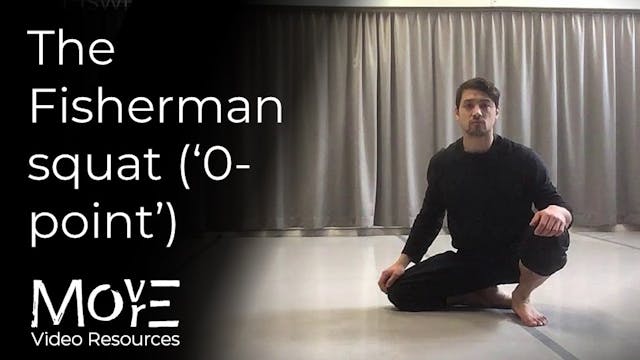Low-gait 'meia lua'
Bipedal patterns & conditioning
•
1m 21s
THE WHAT:
At the lowest-of-the-'low-gait' contexts sits the maximally-compressed squat form, from which any lower in space must be a transition into the floor. 'Low-gait balance contexts' (namely unilateral), then, carry both the valuable experience of unilateral lower-body practice context as well as the stresses of maximal knee-compression, string demands on ankle-stability and loaded extension of the toes.
LEARN MORE (subscriber-only):
https://drive.google.com/file/d/1svo8zeuEjXZuRTkGrHzJsKxJZk5dJ5fv/view?usp=drive_link
_____________________
For programming, guidance, & support for your physical practice:
FREE fundamental prehabilitation program: https://www.movemoremp.com/
Online Support (1 to 1 coaching): https://movemoremp.com/onlinesupport/
Elements (standardised programs): https://www.movemoremp.com/elements
[email protected]
Up Next in Bipedal patterns & conditioning
-
FS (front-side) LG (low-gait) spin
THE WHAT:
A charming little bipedal context for maneuvering and locomoting through space, the 'Low-gait spin' (front-side) is ultimately a progressive, rotational pivot performed on the BALL of the foot. Notice that the most significant challenges here is related to BALANCE. In working on this, t... -
‘Corta-capim’ transition (internal ci...
THE WHAT:
In translation “cutting the grass” - a basic momentum-generating squat pattern which, when integrated within locomotion & 'groundwork' contexts as a transition, also transmits kinetic energy from the previous movement into the rotational swing of the leg.From here it can either dull o...
-
The 'Fisherman squat'
THE WHAT:
The 'fisherman squat' is a fundamental 'zero-point' providing high transitional movement potential through & between the worlds of standing, kneeling, sitting, and floor-contact. It is also a common departure & arrival position for dynamic floor-contact movements, such as rolling, and i...



